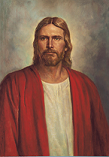
FAIR is a non-profit organization dedicated to providing well-documented answers to criticisms of the doctrine, practice, and history of The Church of Jesus Christ of Latter-day Saints.
m (New page: {{DoYouHaveQuestions}} {{FAQPortal}} Restorationist faiths or churches are defined as all faiths who can trace their origins to Joseph Smith, Jr. [1805-1844] and the religious manifestati...) |
mNo edit summary |
||
| Line 1: | Line 1: | ||
{{FAQPortal}} | {{FAQPortal}} | ||
| Line 16: | Line 15: | ||
The term ''Mormon'' was originally used as a pejorative to identify a person who believed in The Book of Mormon (some early critics also used the term ''Mormonite,'' but this quickly fell from favor.) While it may be tempting to use the label "Mormon" to identify all that that belong to a restorationist movement church, that would be incorrect. Using the term "Mormon" without additional modifiers has come to represent members of the Salt Lake City based Church of Jesus Christ of Latter-day Saints. It is not appropriate to identify members of the Community or Christ or members of the Fundamentalist Church of Jesus Christ of Latter Day Saints as "Mormon" as that would be confusing. It becomes especially objectionable to the LDS church members to identify members of the FLDS as Mormons because the founders of that denomination were excommunicated from the LDS church. | The term ''Mormon'' was originally used as a pejorative to identify a person who believed in The Book of Mormon (some early critics also used the term ''Mormonite,'' but this quickly fell from favor.) While it may be tempting to use the label "Mormon" to identify all that that belong to a restorationist movement church, that would be incorrect. Using the term "Mormon" without additional modifiers has come to represent members of the Salt Lake City based Church of Jesus Christ of Latter-day Saints. It is not appropriate to identify members of the Community or Christ or members of the Fundamentalist Church of Jesus Christ of Latter Day Saints as "Mormon" as that would be confusing. It becomes especially objectionable to the LDS church members to identify members of the FLDS as Mormons because the founders of that denomination were excommunicated from the LDS church. | ||
{{DoYouHaveQuestions}} | |||
==Organization and leadership== | ==Organization and leadership== | ||
The Church of Jesus Christ of Latter-day Saints is led at the highest levels by two presiding quorums: The First Presidency and the Quorum of the Twelve Apostles. (See [http://www.lds.org/ldsnewsroom/v/index.jsp?vgnextoid=e72c12fccd78f010VgnVCM100000176f620aRCRD&vgnextchannel=3e0511154963d010VgnVCM1000004e94610aRCRD LDS Newsroom - Organizational Structure of the Church]) | The Church of Jesus Christ of Latter-day Saints is led at the highest levels by two presiding quorums: The First Presidency and the Quorum of the Twelve Apostles. (See [http://www.lds.org/ldsnewsroom/v/index.jsp?vgnextoid=e72c12fccd78f010VgnVCM100000176f620aRCRD&vgnextchannel=3e0511154963d010VgnVCM1000004e94610aRCRD LDS Newsroom - Organizational Structure of the Church]) | ||
From the highest levels the body of the Church is divided into Areas which contain Stakes amd Missions. Within a Stake, Local congregations are Wards and Branches, within a Mission local congregations are Branches. | From the highest levels the body of the Church is divided into Areas which contain Stakes amd Missions. Within a Stake, Local congregations are Wards and Branches, within a Mission local congregations are Branches. | ||
| Answers portal |
| Mormon FAQ |

|
Restorationist faiths or churches are defined as all faiths who can trace their origins to Joseph Smith, Jr. [1805-1844] and the religious manifestations that he reported during his life. Restorationist movements either spring directly from the religious community founded by Smith, or via separation from some other restorationist faith(s), much as Protestant groups broke with Roman Catholicism and then fragmented further.
It is vital that writers maintain a neutral tone when reporting on events. This is of particular concern when the writer is a member of one of the restorationist churches. Pejoratives such as apostate or break-off should never be used to describe faith groups, except when directly citing a source. When this is done, it ought to be clear that the characterization belongs to the source, not the media.
This is the largest of all of the restorationist movements and is based in Salt Lake City. Note the lower case on the word "day" and the use of hyphenation. Also, since the starting "The" is part of the formal name of the Church, it should be capitalized, even if used in the middle of a sentence. http://www.lds.org/, http://www.mormon.org/
The term Mormon was originally used as a pejorative to identify a person who believed in The Book of Mormon (some early critics also used the term Mormonite, but this quickly fell from favor.) While it may be tempting to use the label "Mormon" to identify all that that belong to a restorationist movement church, that would be incorrect. Using the term "Mormon" without additional modifiers has come to represent members of the Salt Lake City based Church of Jesus Christ of Latter-day Saints. It is not appropriate to identify members of the Community or Christ or members of the Fundamentalist Church of Jesus Christ of Latter Day Saints as "Mormon" as that would be confusing. It becomes especially objectionable to the LDS church members to identify members of the FLDS as Mormons because the founders of that denomination were excommunicated from the LDS church.
|
The Church of Jesus Christ of Latter-day Saints is led at the highest levels by two presiding quorums: The First Presidency and the Quorum of the Twelve Apostles. (See LDS Newsroom - Organizational Structure of the Church)
From the highest levels the body of the Church is divided into Areas which contain Stakes amd Missions. Within a Stake, Local congregations are Wards and Branches, within a Mission local congregations are Branches.

FAIR is a non-profit organization dedicated to providing well-documented answers to criticisms of the doctrine, practice, and history of The Church of Jesus Christ of Latter-day Saints.
We are a volunteer organization. We invite you to give back.
Donate Now